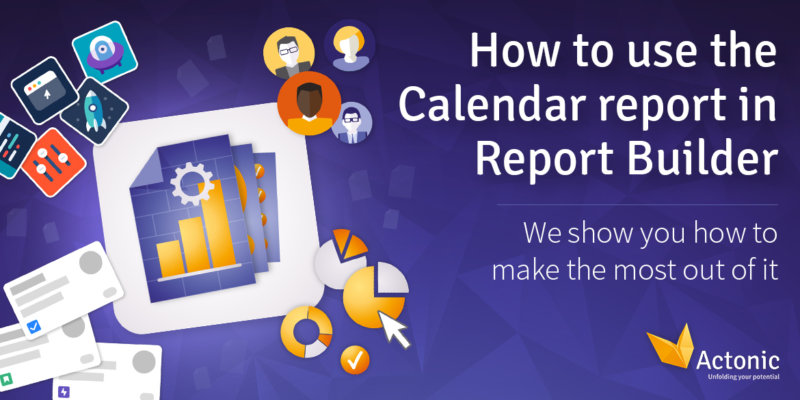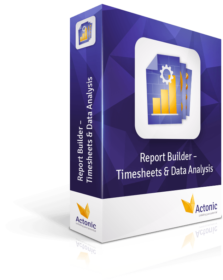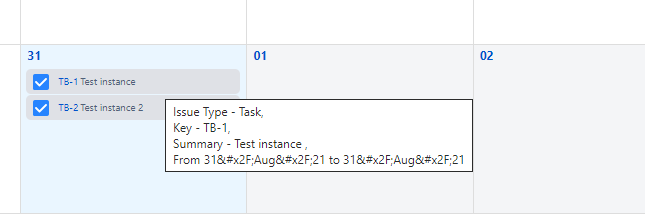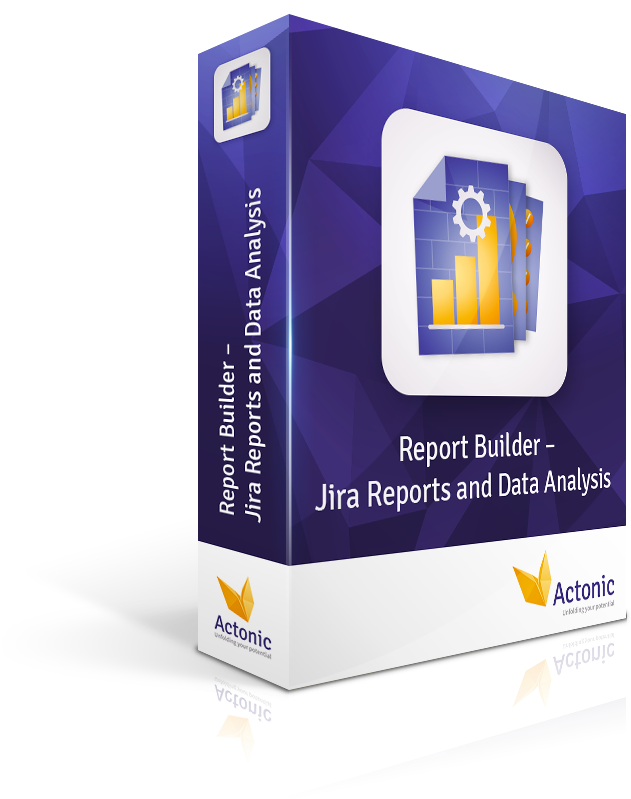In the “Shared” tab, you will find every shared report which has been shared with your user. Finally, in the “Create report” tab, you will find the report gallery.
In the gallery, we differentiate between Quick reports and Scripted reports. Quick reports are ready-to-use report templates in Report Builder’s gallery. By simply opening and adjusting the data or filters, you will get data insights instantly. Unlike Scripted reports, you cannot modify the layout and code of these reports. However, they enable immediate results for the most important key figures in your team, such as your teams’ workload.
A quick report that is very popular is the Calendar report.
The Calendar report’s main aim is to display a selection of issues in a calendar view, providing a snapshot of the time and resource being used, alongside other demands on your team’s time, like vacation. You can choose between three different views: Monthly view, weekly view, and Weekly view with time.
A pop-up window appears which you have to configure
2. In this pop-up window, “Add Calendar Source” you need to set:
-
-
-
Color: Pick any color for your event
-
Source name: Pick an event name
-
Filter By: You need to select which projects, issues, etc. you want to see in the calendar
-
Event Start Time: Select a Jira time field (created date) at which your event should start
-
Event End Time: Select a Jira time field (due date) with which your event should end
-
View Event Fields: These are fields from the Jira issue that you want to be shown in the body of the event card
-
Event Info-card Fields: These fields will be shown in the pop-up after clicking on the event card
On the right side of your screen, you can filter your previously created calendar sources. Here you have the option of showing or hiding the sources in your view using the checkbox in front of them.
The report is particularly useful for displaying the range between the start and end time of solving issues. You get a practical and quick overview of which issues were processed, when and how much time was spent or used. You can also get a clear display of when your employees have weekends and when they are on vacation. Your employees only need to create tickets for their vacation or free time, and then you can filter your event accordingly and create a vacation source.










 Gain hands-on insights from live webinars
Gain hands-on insights from live webinars